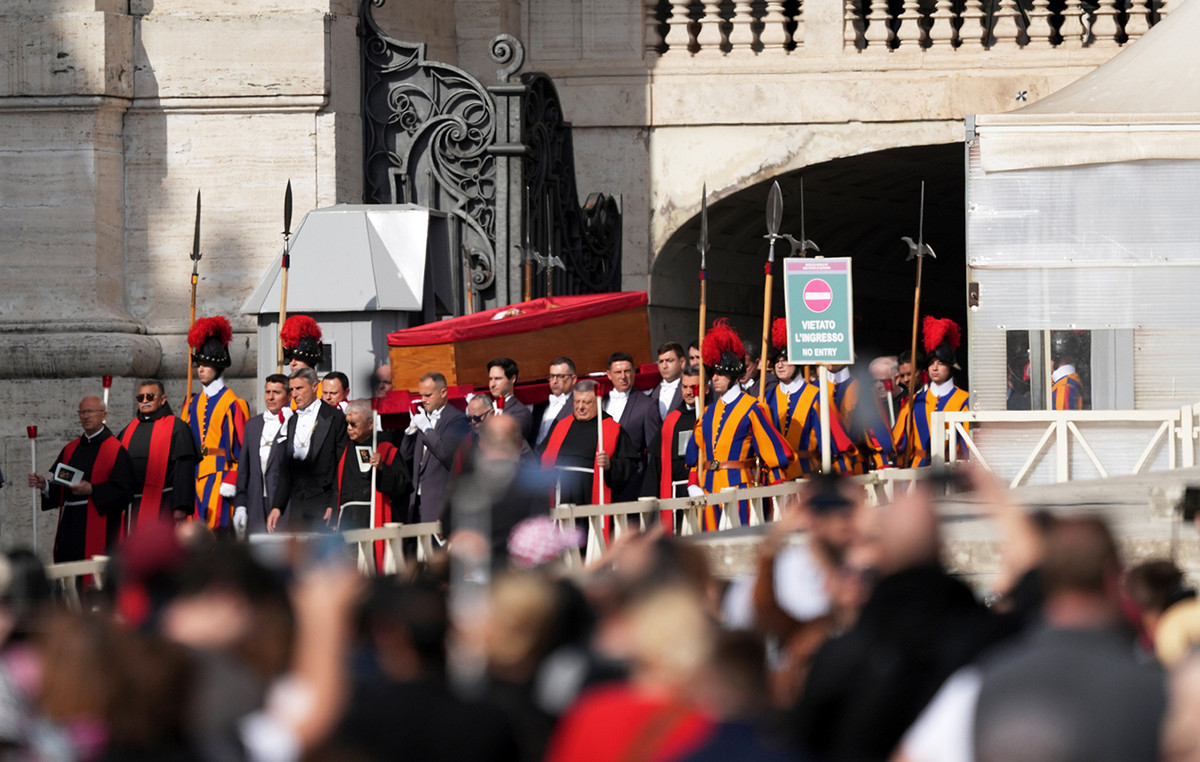In great style, Tom Cruise returns to the big screen – and invites everyone to go to the cinemas – with “Mission: Impossible – Reckoning Part 1”, which premieres this Thursday (13).
In the plot, agent Ethan Hunt embarks on a new mission: track down a terrifying weapon that threatens all of humanity before it falls into the wrong hands.
With control of the future and the fate of the world at stake, and ancient enemies from the past closing in, a death race around the world begins.
In addition to Cruise, the feature features Hayley Atwell , Rebecca Ferguson , Vanessa Kirby , Esai Morales , Simon Pegg and more in the cast.
Even before the premiere, the new film of the successful franchise was already drawing attention. Photos and videos from the filming of Tom Cruise’s stunts circulated in the press and on social media.
The director Christopher McQuarrie explained how the scenes were realized and revealed that all the equipment had to be created for some sequences.
“The challenge of making any action movie is usually to hide that your actor is not doing the stunt (unusual, difficult, and dramatic physical feat that may require a special skill) and what someone else is doing. In Mission Impossible it’s the opposite”, he began.
“We have an actor who does the stunt himself and we are constantly trying to develop technology to show him doing it.”
The filmmaker commented on the process of the scene in which Cruise runs and flies with a motorcycle, which, according to him, “was a great challenge”.

“How do you get a camera close enough that it shows that it’s really him there? At the same time, how are you far enough away to see that this isn’t being done with wires/ropes, that it’s not some kind of trick?” he said.
“We had to develop a gimbal system (devices responsible for stabilizing the movement of cameras so that it is possible to obtain videos or photographs in motion) in which a camera operates two cameras that are flying along with it. This camera accompanies them via a helicopter,” she explained.
All this equipment did not exist. Everything had to be created for this sequel
Christopher McQuarrie
The director also told details of another impactful scene in the feature: the fight and explosion on the train – which was created for the production.
“From the beginning I told Tom that I wanted this film to have a sense of adventure. I wanted to make a bigger, more global film. Part of it was making a more romantic movie. And nothing sounded more romantic to me than a train, in particular the Orient Express,” he said.
“The franchise had done a sequence on a train before, in the first film, but a lot of it was done on a stage. We wanted to do it practically. This resulted in building a train where Esai Morales, our villain, and Tom could be fighting on the roof of that train. But also [que pudéssemos] explode.”

“But how do you continue with a sequel if it ends with the explosion? That ambition became what the train explosion scene in our movie is, which is pretty much a slow-motion train explosion. It was very challenging. Not only executing the sequences, but also planning, like making all the wagons and equipment for filming the stunts that we were creating”, he explained.
“We didn’t limit ourselves to something that could be done physically. If we hit an obstacle, we would figure out how to overcome it,” she added.
Tom Cruise published a video on his social networks that shows the construction – and fall – of the train. (See below)
This train sequence was tricky, but the outcome made it all worth it. I can’t wait for everyone to see it come to life! pic.twitter.com/z067kFLIku
— Tom Cruise (@TomCruise) July 5, 2023
For the director, the more practical things are done, the more real and immersive it becomes. That’s because unpredictable things can happen, even when everything is planned.
“We had no way of predicting how the train would fall off the cliff. For example, when the train crashes with cameras attached around it, the rotation of the wheels created strange camera behavior, which, had we done it in CGI, we would never have made this discovery.”
“When the train was coming down with all the equipment moving the way it did, there was grease on the floor and the actors were involved in something that was so unpredictable and chaotic, it creates an energy there that you wouldn’t have had if you had done it with CGI.” , he added.
According to McQuarrie, the problem with CGI, which can be useful in many ways, is that it gives you exactly what you want.
“What we learned from the ‘practical’ action is that often we don’t have what we want, we have what the mission gives us. It gives you something real, chaotic, that you wouldn’t get otherwise.”
“Tom and I are more interested in you [telespectador] has the most emotionally immersive experience possible. We want you to be as connected with the protagonist as possible,” she said.

“Mission: Impossible: Reckoning Part 1” it passes through several cities and makes a real trip around the world and, according to the director, it is also one of generating this identification with the viewer.
“Filming in so many places, we wanted to take the audience to places they might not be able to go. We want to transport you to another country and celebrate another culture and maybe inspire you to go there.”
watch the trailer
Source: CNN Brasil
I’m Robert Neff, a professional writer and editor. I specialize in the entertainment section, providing up-to-date coverage on the latest developments in film, television and music. My work has been featured on World Stock Market and other prominent publications.







